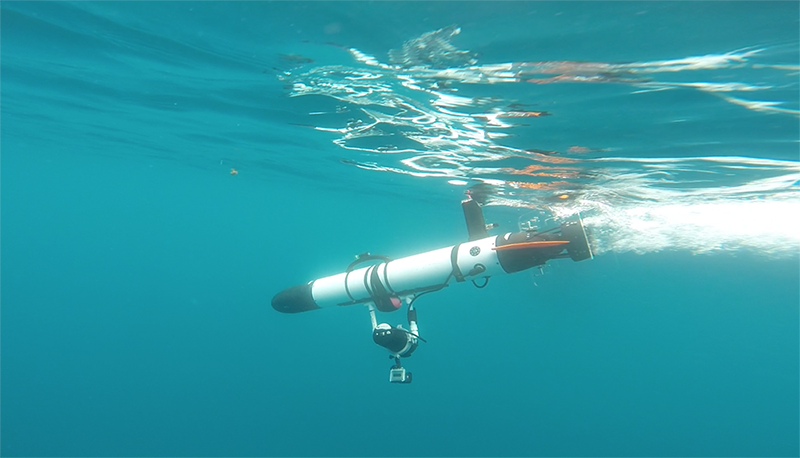Researchers Employ AUVs to Search for Shipwrecks
August 24, 2015
In an innovative effort to simplify shipwreck searches, a team from Harvey Mudd College and California Polytechnic University, San Luis Obispo, will spend a week on the island of Malta working to create an intelligent automated underwater vehicle (AUV) system for finding and mapping Mediterranean shipwrecks.
During the Aug. 24–30 excursion researchers will work at coastal field sites as they seek to improve on current approaches to marine archaeology while developing novel techniques that can be applied to robot exploration tasks. Harvey Mudd engineering major Apoorva Sharma ’16, Harvey Mudd engineering Professor Chris Clark and Cal Poly researcher Zoe Wood will work with marine archaeologists, including Timmy Gambin from the University of Malta, local experts and lay people. The trip is supported by funds from Cal Poly and by the Harvey Mudd Jude and Eileen Laspa Fellowship Program in Engineering Systems.
Malta, with its large harbors and central location, has played a key role in maritime history and in the development of underwater archaeology. It is home to some of the richest underwater archaeological sites, including shipwrecks from World War II and those that predate the Roman Empire. In the Mediterranean, the majority of unexplored wrecks remain in coastal regions at depths greater than 50 meters. The approach to determining potential wreck site areas remains largely based on labor-intensive human research into historical archives. Identification of new shipwrecks is slowed by the one-at-a-time site excavation approach. An AUV system has the potential to provide intelligent shipwreck search, mapping and visualization.
In Malta, researchers will work at three underwater sites—HMS Stubborn (a submarine at 55m); an intact aircraft at 70m; and a fragmented aircraft at 70m. A diving team and AUV/remote operated vehicles will obtain data in video format that will be processed into 3-D photogrammetric imagery at the University of Malta. They will use the data to develop learning and optimization algorithms dedicated to the problem of maximizing the likelihood of finding shipwrecks during AUV search missions. They will also develop visualization techniques dedicated to surface reconstruction that merge side-scanning sonar and stereo image disparity maps while incorporating volume visualizations of marine site science data. The information will be used to conduct actual search and mapping of (known and unknown) shipwrecks in the coastal areas of Malta and Sicily.
Clark has been taking student teams to Malta for the past seven years as part of a research program he co-founded while at Cal Poly San Luis Obispo. Since joining the Harvey Mudd faculty in 2012, Clark has involved engineering and computer science students from both schools to advance research in autonomous systems, including underwater robots and multi-robot systems. He runs the Lab for Autonomous and Intelligent Robotics (LAIR), which focuses on multi-robot applications including motion planning, localization, mapping, integration of social systems and control.
The technology developed in Malta not only has applications to archaeology, but also to a wide range of applications in oceanography, biology, homeland security and defense. A wide variety of (semi-) autonomous vehicle applications require intelligent search, including missing persons search, animal tracking (e.g., fish) and the search for military targets. The intelligent search components of this work will generalize to the search for archaeological sites in other areas of the world, including land. Faculty and students will present research findings to the public, and a digital archive of sites will be created for the archaeological community.
Future research in Malta will be supported by a recent grant from the National Science Foundation. “IRES: Intelligent Search and Mapping of Submerged Cultural Heritage Ancient Shipwrecks Using Autonomous Underwater Vehicles” is funded under the umbrella of the International Computer Engineering Program (ICEX), which Clark co-founded with Christine Victorino, now assistant vice provost at University of California Riverside. For the past three years, the ICEX program has brought student cohorts to Malta and Sicily. Working alongside local archaeologists from the University of Malta, the students deployed underwater robots in ancient tunnels located below fortresses and castles to conduct mapping surveys. By developing novel mapping algorithms, over 70 cisterns were explored and mapped providing archaeologists with the first-ever maps of ancient cisterns created with robotics technology.
- Malta research blog
- Clark’s research lab, the LAIR
